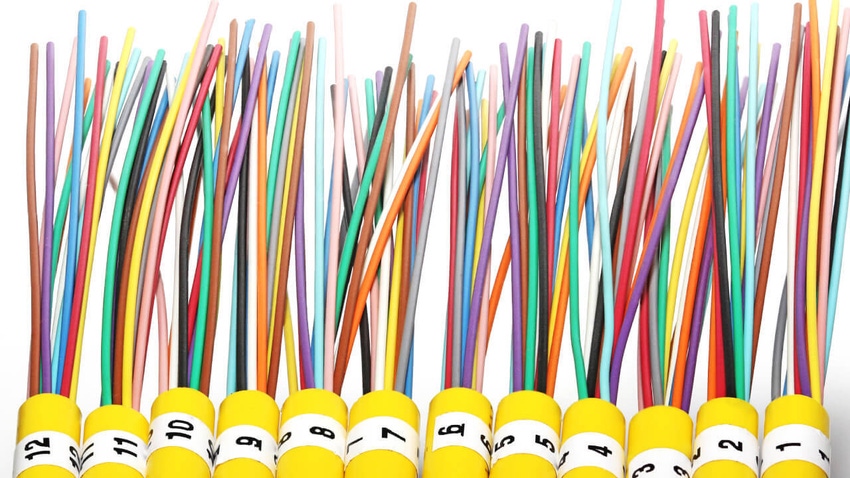Lead legacy could cost AT&T, others up to $60B – report
According to New Street Research, it could cost up to $60 billion to remove thousands of aging telecom cables covered in lead.'AT&T likely has the highest [financial] exposure,' the firm wrote.

Amid calls for accountability, one financial analyst firm estimates it will cost up to $60 billion to remove thousands of aging telecom cables covered in lead.
According to the firm, New Street Research, AT&T is squarely in the crosshairs. "AT&T likely has the highest [financial] exposure overall, followed by Verizon and Lumen," the firm wrote in a recent note to investors.
According to the New Street estimates – which stem from an extensive Wall Street Journal exposé on the issue – there are roughly 48 million homes and offices connected to cabling that still contains potentially dangerous levels of lead. The firm estimates some of those locations will be cleaned up amid government spending to cross the digital divide. But, for the remainder, the New Street analysts estimate a total cleanup cost of $59 billion.
"Regardless of who pays, this will be a major overhang for the ILECs [incumbent local exchange carriers, like AT&T] for some time," they warned.
Some top Congressional legislators are already moving forward with plans to address the issue.
"The telecommunications companies responsible for these phone lines must act swiftly and responsibly to ensure the mitigation of any environmental and public health effects," Sen. Edward Markey (D-Mass.) wrote this week in a letter to USTelecom, a trade association for the telecom industry. "This is corporate irresponsibility of the worst kind."
In his letter, Markey asked the association and its members – which include AT&T, Verizon and others – to identify how much cabling contains lead and where the lines are. And he asked "what plans do the companies have to address the environmental and public health issues posed by the cables?"
A century in the making
The WSJ has published a series of detailed, lengthy articles on aging telecommunications cables that may have hazardous amounts of lead. According to the publication, "telecom companies left behind more than 2,000 potentially dangerous lead-covered cables under water, in soil and overhead. Many more are likely to exist."
The WSJ noted that US telecommunications companies mostly stopped using such cabling in the 1960s, amid mounting evidence that no amount of lead is safe, whether ingested or inhaled.
However, according to the outlet's latest report, executives at companies like AT&T and Verizon have known for decades that lead-covered cables continue to pose a health risk as that lead leaks into surrounding soil and water.
For example, the publication cited a 2010 presentation by an AT&T executive acknowledging the environmental impact of lead-covered cables in the operator's network. "Soils retained between 83 and 98% of the released lead within 2 inches" from the cables, claimed that presentation.
Moreover, the publication indicates that AT&T and Verizon employees who dealt with such cables may show higher levels of lead in their bodies.
Preparing the response
Both AT&T and Verizon have offered various statements in response to the WSJ's reports. For example, Verizon said it is "taking these concerns regarding lead-sheathed cables very seriously," the company told the publication. Verizon added: "There are many lead-sheathed cables in our network (and elsewhere in the industry) that are still used in providing critical voice and data services, including access to 911 and other alarms, to customers nationwide."
But the issue is becoming important enough that AT&T recently published a webpage on the topic. It also links to USTelecom's own response to the WSJ's reporting.
"We take the matters raised by The Journal very seriously, and any public health concern is a top priority," AT&T writes on its site. "It's important to note that The Journal's reporting conflicts not only with what independent experts and long-standing science have stated about the safety of lead-clad telecom cables but also our own testing, which we have made available to the public and shared with The Journal. The scientific literature and reliable studies in the US and abroad give no reason to believe that these cables pose a public health issue or a risk to workers when appropriate safety measures are in place."
In its latest report, the WSJ notes that AT&T provided a single test report related to one lead-cable location, in Lake Tahoe, California, that said it found "very low" levels of lead in the water and that the lake's water quality is "not adversely impacted" by lead cables. The WSJ said its report is based on hundreds of tests all over the country.
The blame game
It's unclear how the issue will be resolved, partly because the cables were laid at a time when they were considered safe and because it's not clear who owns the cables today, in some cases. Indeed, the Environmental Protection Agency (EPA) hasn't yet commented on the removal process for such cables, according to the WSJ.
The New Street analysts said that if removing the cables becomes required it's not clear who will foot the bill. The analysts cited three possible groups: the companies, telecom customers or taxpayers.
"We think the government has a tough choice: if they force ILECs to pay the bill, some will be forced into bankruptcy delaying the remediation process in those markets potentially indefinitely. It will significantly slow the deployment of fiber infrastructure in the US. It would also leave less resources available to bring broadband to unserved and underserved markets via the BEAD [Broadband Equity Access and Deployment] program," they wrote, nodding to forthcoming government subsidies to US telecom companies. "We suspect that it is more likely that rate payers or taxpayers are required to cover most or all the remediation cost."
Related posts:
— Mike Dano, Editorial Director, 5G & Mobile Strategies, Light Reading | @mikeddano
About the Author(s)
You May Also Like












